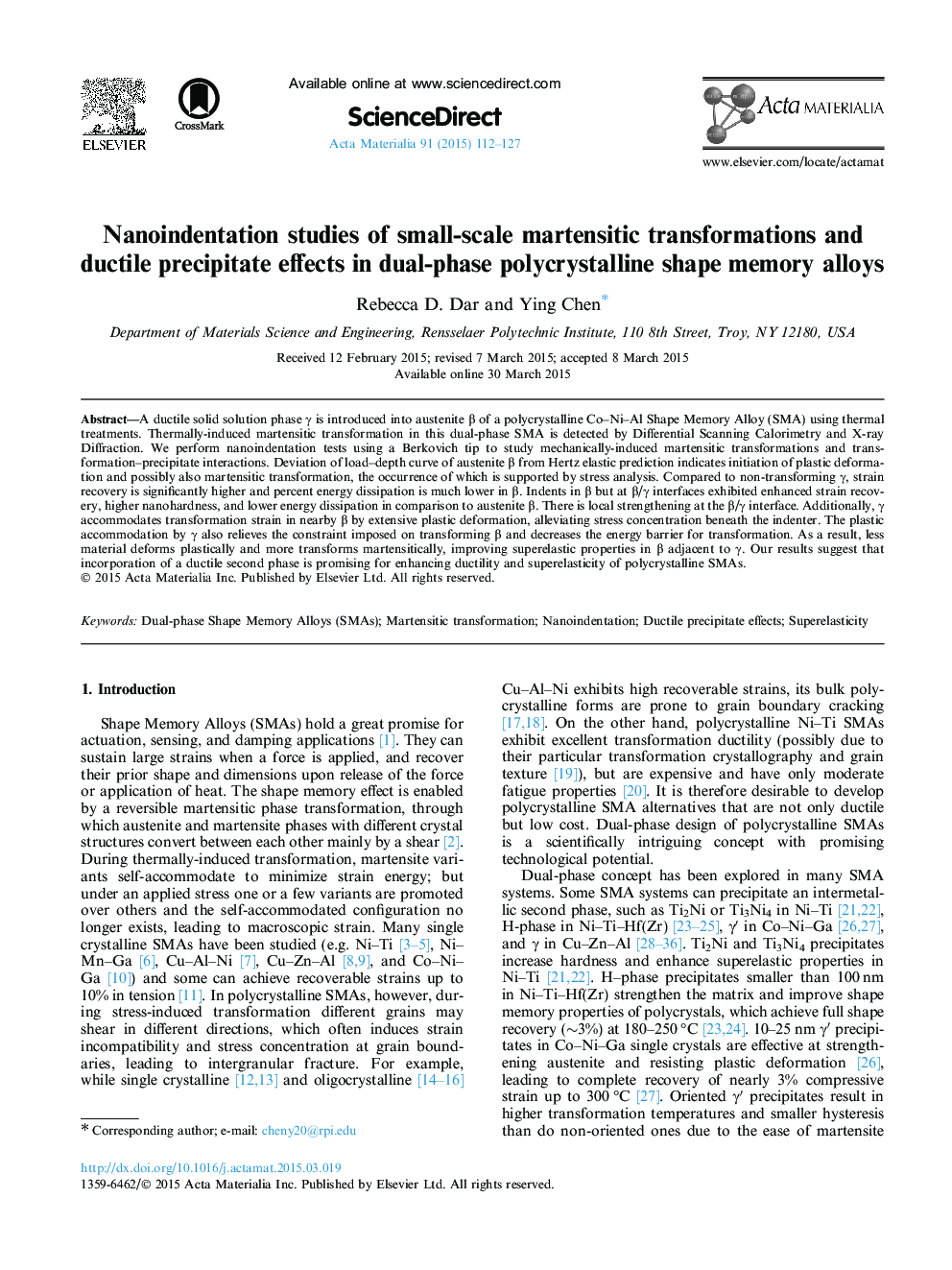| Article ID | Journal | Published Year | Pages | File Type |
|---|---|---|---|---|
| 1445354 | Acta Materialia | 2015 | 16 Pages |
A ductile solid solution phase γ is introduced into austenite β of a polycrystalline Co–Ni–Al Shape Memory Alloy (SMA) using thermal treatments. Thermally-induced martensitic transformation in this dual-phase SMA is detected by Differential Scanning Calorimetry and X-ray Diffraction. We perform nanoindentation tests using a Berkovich tip to study mechanically-induced martensitic transformations and transformation–precipitate interactions. Deviation of load–depth curve of austenite β from Hertz elastic prediction indicates initiation of plastic deformation and possibly also martensitic transformation, the occurrence of which is supported by stress analysis. Compared to non-transforming γ, strain recovery is significantly higher and percent energy dissipation is much lower in β. Indents in β but at β/γ interfaces exhibited enhanced strain recovery, higher nanohardness, and lower energy dissipation in comparison to austenite β. There is local strengthening at the β/γ interface. Additionally, γ accommodates transformation strain in nearby β by extensive plastic deformation, alleviating stress concentration beneath the indenter. The plastic accommodation by γ also relieves the constraint imposed on transforming β and decreases the energy barrier for transformation. As a result, less material deforms plastically and more transforms martensitically, improving superelastic properties in β adjacent to γ. Our results suggest that incorporation of a ductile second phase is promising for enhancing ductility and superelasticity of polycrystalline SMAs.
